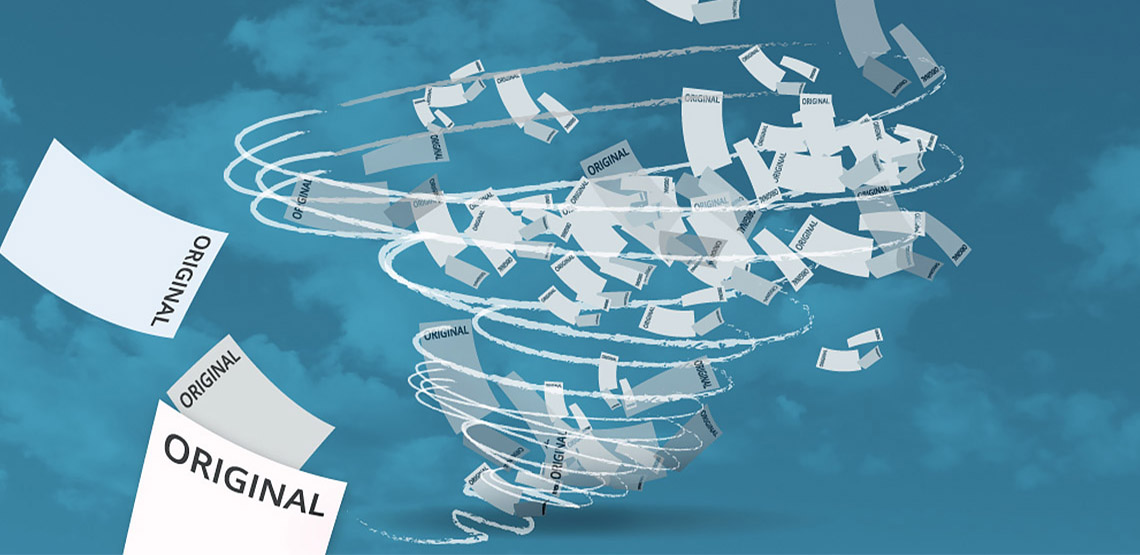Even in today’s wired world, many organizations require access to original documents to deliver goods or services. If yours is one of them, how you maintain continuity of access to those documents should be part of your Business Continuity Planning.
Even though we like to think we live in a paperless age, most of us don’t. In paper-intense industries, access to original documentation may have both financial and regulatory implications. In many other businesses, those ‘original documents’ are fleeting: checks, authorizations, forms and others that are acted upon then discarded. They are necessary only until converted or input.
Think of original documents as “paper data”. Even with documents of only temporary importance, their loss (or loss of access to them) may be vital to the performance of our most critical functions or processes. Why do we put emphasis on Recovery Point Objectives (RPO)? Because we understand losing electronic data may imperil our business. There is little difference with “paper data” waiting for conversion to electronic data. If it’s gone (because of physical destruction) or elusive (because we can’t get postal deliveries, or we’ve been forced out of our office) we can’t fully function.
Preventing the loss of paper data is a Risk Management issue: what can we do to mitigate or eliminate the risk of losing our original documents. High volume originals can be scanned and shipped offsite or destroyed; the higher the volume of transactions, the cheaper the cost to convert them. A disruptive event might still result in a few missed transactions, but that might be acceptable (part of our ‘risk appetite’).
Scanning and archiving lengthy documents may neither be appealing nor inexpensive. Many companies keep ‘work in progress’ documents on hand – and ship everything else off-site. That only partially reduces the risk of loss. Some store important documents in ‘fireproof’ file cabinets (there is no such thing as ‘fire proof’); others assume the building sprinkler system will save them (it might, but at a cost, and with time).
Many original documents are replaceable – for a fee. I once helped a client calculate the cost to replace all the ‘in-progress’ documents their Litigation Department kept in onsite file cabinets. Not only was the cost larger than expected (in some cases, more than $10US per page), but the time and manpower needed to replace them was staggering.
As a Business Continuity professional, it may not be your job to find a solution to original documents at risk. But you should never ignore those risks when building Plans. Ask questions, question assumptions – and don’t let dependency on original documentation become a Business Continuity liability.











